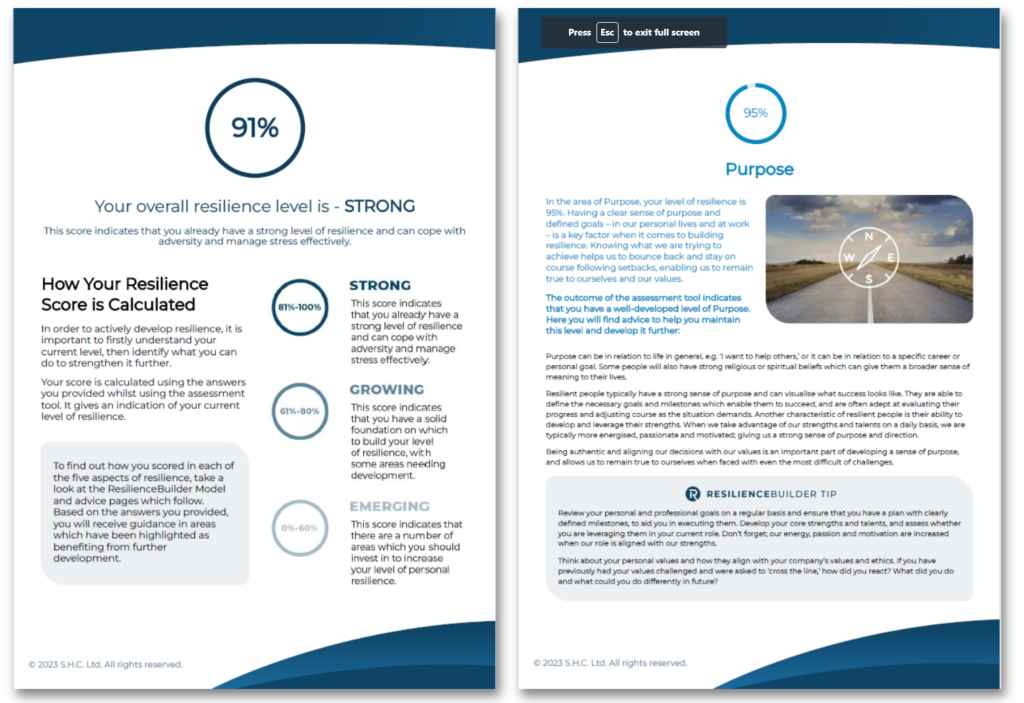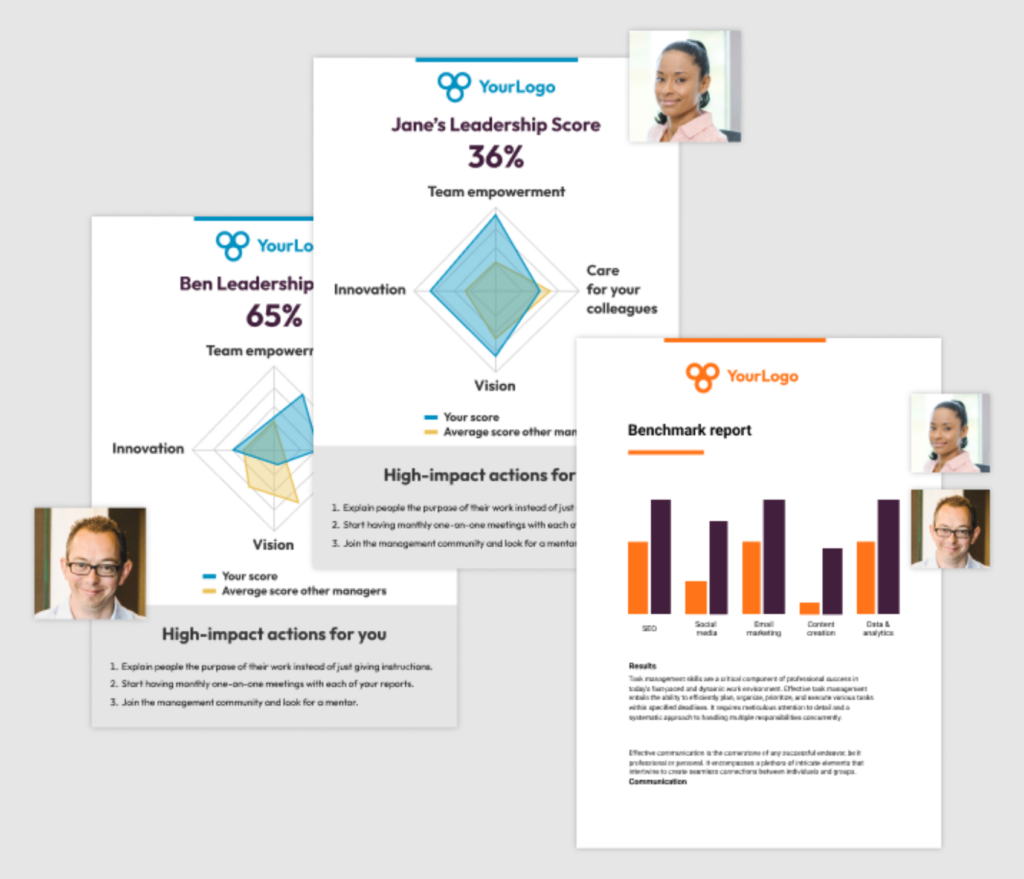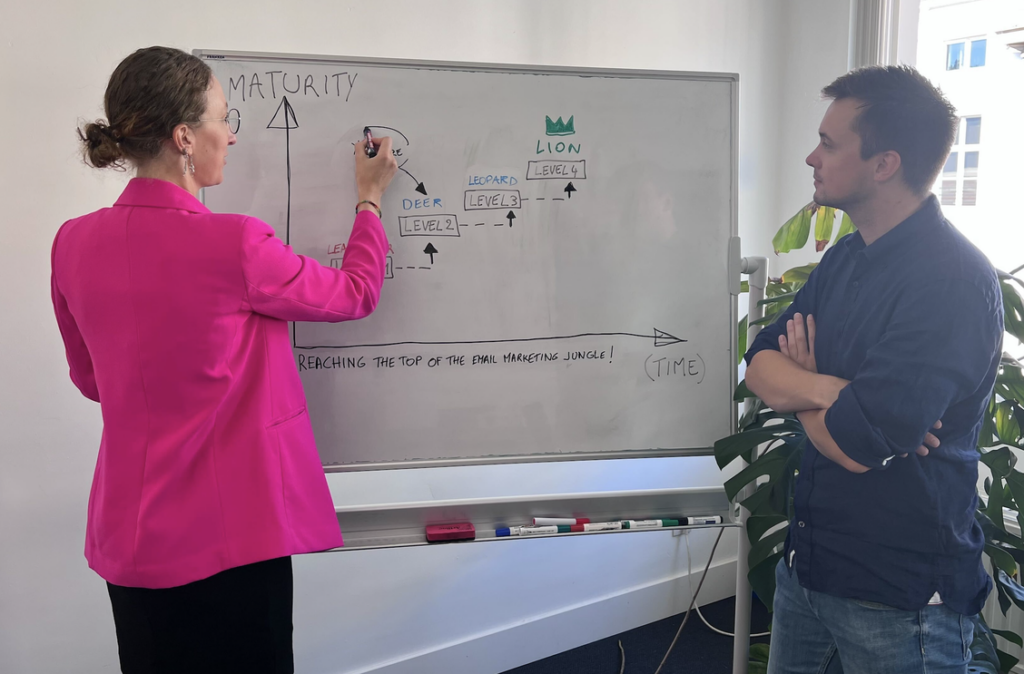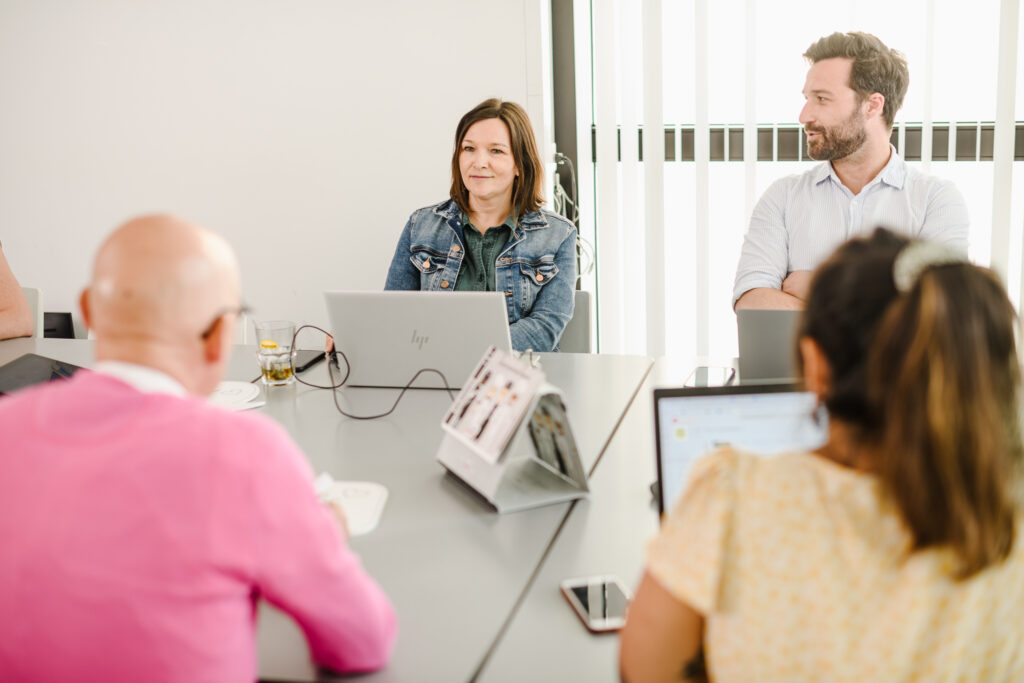Though he refuses to call himself a technologist, Steve Howe worked in the IT services industry for over forty years – about twenty-five in Senior Leader positions. Moreover, a few years ago, he embarked on the journey of developing a sophisticated, digital assessment with our Pointerpro platform. One that is now being used by more than twenty resilience coaches worldwide, certified by Steve’s own company. The name of the company – concurrently the name of his resilience assessment tool: ResilienceBuilder®

We had a chat with Steve, hoping to reveal some key tips and success factors for anyone else starting a similar journey. In this article:
Preliminary steps to the resilience assessment: From resilience research to a clear and comprehensive model
To kick this off, can you tell us why you decided to found ResilienceBuilder® a few years ago?
Yes, of course. Basically, whilst I enjoyed what I had been doing in the IT services industry, I decided to leave the corporate world for something more meaningful to me. What I had always enjoyed most, especially in leadership positions, was working with people. I wanted to use my experience to help others: people at the start of their career, in leadership positions, and also teams of people working together.
I remember working with a customer, three and a half to four years ago. In this organization there had been high levels of stress and sickness, leading to burnout. As I consulted for this organization – and also looking back on my own career and the challenges that I had faced – I got very curious about why certain people could cope with stress and pressure much better than others.
So, over a three year period I deeply researched the topic of resilience: What makes a person resilient? What are the key characteristics? And how do you build resilience? Soon enough, I started to recognize – and this was even pre-pandemic, by the way – that the research I had been doing needed to be turned to good use. And so it became the basis for developing a model first of all, and of course later the ResilienceBuilder® assessment tool.
Questions or remarks?
You mentioned asking yourself what are the key characteristics needed for resilience. Can you tell us how that question led to the development of your own model?
So, I mentioned I undertook some really extensive research – diving into academic papers, journals, research papers and so on. Soon enough, I saw some patterns emerge – some groupings, in fact. And it was those groupings that enabled me to build a powerful but easy-to-understand model.
I identify 5 key areas or categories, if you will:
- Mental strength: being able to adapt to change, to remain positive, to cope when things get tough.
- Purpose: having a north star, something you’re aiming for.
- Physical stamina: healthy body, healthy mind, exercising regularly. But also areas such as work-life-balance, the ability to relax, and – very importantly – having quality sleep.
- Emotional intelligence: being self-aware, able to manage your emotions and to be comfortable asking for help or feedback, and to manage conflict.
- A strong support network: having relationships with people to confide in, when things get tough – even professional relationships with a mentor or coach.
Turning a resilience model into a resilience assessment
I love that you take into account more than just internal factors of resilience, with that last characteristic. Now, how did you come to the idea of developing all this into full-on digital assessment?
Well, there was all this research, all of that information making it possible to understand really well what makes someone resilient, based on those five areas I had analyzed in so much detail…
And of course, I had this sense of a mission to help people cope better with challenges of stress and adversity. So when I juxtaposed what I had researched, and what the world seemed to be needing, it became obvious that somehow I needed to turn this model into an easy-to-use tool to assess someone’s level of resililence – and more importantly, identify key areas for development. So that’s when this really turned into making the model available and accessible to help people in their lives.

The ResilienceBuilder® model in short
Pointerpro, the assessment tool tailored to ResilienceBuilder®’s growth plan

I know it sounds very corny but without Pointerpro as an enabler, there is absolutely no way that we could have done what we’ve achieved so far.
Steve Howe (Founder of ResilienceBuilder®)
And so obviously, you ended up using Pointerpro, but I’m curious about the path that led you to us in particular. Did you look at other solutions too?
It’s one of those situations of: “you don’t know what you don’t know.” When I decided we would try to build something, I actually had no idea that there could be tools like Pointerpro out there.
Initially, like a lot of people in this kind of area, I started to build an assessment on a classic Excel spreadsheet. But of course it lacked the sophistication and a lot of the other things that I ended up being able to do with Pointerpro. The big area there is certainly, having a professional look-and-feel to the assessment. One that goes as far as generating a professionally looking PDF report for the respondent.
I really want to emphasize how important it was to have a platform that could generate a personalized report for our respondents: My research suggested that when you can identify the key drivers for low resilience at an individual level, then targeting these areas gives you the best outcome, That’s why having the ability to give specific recommendations at an individual level became a non-negotiable requirement.
Now to answer your question: Yes, we looked at a number of different platforms. But, here are the things that stood out with Pointerpro:
- Building this quite complex assessment was relatively simple and quick for me – and I don’t consider myself to be a technologist.
- Secondly, behind it all sits a very powerful logic to score the answers, but also to create formulas and combine answer choices to trigger particular outcomes in the PDF report.
- As discussed, the automated, individual PDF reports – a very strong functionality that we hadn’t seen elsewhere. And really, the ability to create an incredibly professional looking, branded document.
- And also, the attractive commercial model of Pointerpro that scales as our business scales – that was exactly what I was looking for.
- Lastly, I liked the people I talked to directly, and doing so, I understood there would be many more functionalities and capabilities developed down the line.
Nice to hear. So, today, are you happy with the business you’ve been able to develop, using Pointerpro?
Yes. As mentioned, my background is in IT services. So I’ve worked within and alongside some of the largest technology companies in the world. And so, I’ve been targeting some of these large, global organizations with the resilience assessment.
I can’t really specify names but for instance, there is one that SaaS companies like yours – who need to host robust online platforms – are very familiar with. They have been using the resilience assessment tool both at an individual level, and on an organizational level – in their teams. To support them further on, we’ve been providing 1-to-1 coaching but also group workshops to target collective challenges.
By the way, so far in this conversation, I’ve emphasized the individual level to build resilience. But, clearly it’s also very important to consider organizations and their culture, to create an environment in which people can thrive. So our approach isn’t only bottom-up. It’s very much a bottom-up and top-down approach.

ResilienceBuilder® – from assessment to report
Now, in the 1-to1 follow-up coaching session, we first try to understand a little more about an area of difficulty, like “change” for instance. We try to recognize what’s really happening and what makes the person uncomfortable with change. This could be related to past experiences, for instance.
And then we coach them through a process to open up to change a bit more – to start looking at change as an opportunity, rather than a threat. Quite often there’s a sort of denial phase at first. So we try to get them into a process of acceptance as soon as possible to embrace change, and perhaps doing so, create the opportunity for themselves to acquire some new skills.
Are you currently planning on developing any other assessments with the Pointerpro platform?
Right now, we’re still somewhat early in the journey with ResilienceBuilder®. Now that there’s this professional tool in place, I’m focusing on reaching as many people as possible to benefit from it. So no new plans at the moment. Right now it’s all about getting ResilienceBuilder® out there as the leading tool for resilience assessment, across the world.
And to do that, I’ve been building an ecosystem of partners of professional coaches that get trained and certified to use our platform. That way, they get to take ResilienceBuilder® to their network of customers and build their own practice around it.
Obviously, my company will look to use the Distribution Portal of Pointerpro, so that the entire network of coaches and partners can directly access the platform and independently administer assessments and reports.
Sounds like a great business model and a great way to truly have the impact you were hoping to have at the very beginning of your journey. It’s actually really satisfying for Pointerpro too, as a software company, to be a part of something this meaningful.
Yes. And I know it sounds very corny but without Pointerpro as an enabler, there is absolutely no way that we could have done what we’ve achieved so far. It would not have been possible. I wouldn’t have had the resources, nor the capability to be honest to go out and develop my own platform.
Key tips for (future) Pointerpro users
To close, do you have any key recommendations for people that are playing with the idea of developing a project with Pointerpro as an assessment tool?
The most important thing I’d recommend is to clearly understand and have researched your content. Before you start putting your content in the tool you need to have created a real model and understand how this is going to be used by the respondent.
I’d recommend that then, and only then, you should start implementing everything. Particularly in an area like mine that requires detailed understanding of the subject matter.
As I said, Pointerpro is an enabler. It enables you to make all your knowledge and research available to people – but without that research, there’s of course no value.
In terms of features, I’d say right now I’m not even using all the features that are in Pointerpro. It’s very powerful and comprehensive. I’d recommend any new user to have a good look at what functionalities are already in the tool that could improve the service they’re trying to offer.
Thank you for that feedback, Steve. And for this great interview!
Thank you for giving me the opportunity to talk about all this. This was great.
How to build automated assessment reports with Pointerpro
Here’s a quick introduction on how Pointerpro works, brought to you by one of our product Experts, Chris.
This is what clients say about us:











